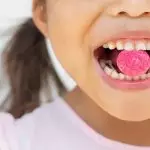
Broken Bones And Fractures In Children by Dr. Chetan Ginigeri
7 min readWritten by Editorial Team


Children always seem to get involved in gravity-defying stunts and games. With high energy levels and the running, jumping, and overall Brownian motion type movements they engage in, it should come as no surprise that broken bones and fractures in children top the list of the most common injuries in children. In fact, broken bones and fractures in children happen to be the fourth most common injury among children under the age of six and are usually due to falls and slips.
As a parent, it becomes quite a harrowing experience when children get hurt. Even though you prioritize child safety, it may happen. Not knowing if it is a superficial injury or a fracture can be stressful. We explain a few basics about fractures in children so you can identify them and decide when to rush your child to the doctor.
In This Article
- What Causes Broken Bones in Children?
- Signs and Symptoms of a Fracture in Children
- Severe Fractures in Kids
- How to Treat a Fracture in a Child?
- Types of Fractures
- How is a Fracture Diagnosed?
- Tests That Help Diagnose a Fracture or a Broken Bone
- Preventing Broken Bones in Babies and Children
- FAQ’s
What Causes Broken Bones in Children?
Children, by nature, are inquisitive. When babies first begin moving, they climb, jump, and try to investigate anything and everything. Until they have complete control and a well-developed motor system, injuries are common.
Babies and toddlers have softer, more pliable bones than children and adults. As a result, they may fall and hurt themselves, but do not experience fractures. This does not imply that parents start feeling guilty about it! Falling, tripping, and slipping is all, but a part of the game.
The good news is that children’s bones heal much faster than ours do as well. They have a soft, thick covering of flesh and tissues and can absorb the blow better than us adults. Surgery to correct a broken bone is rarely necessary, and in most cases, a cast or a splint and restricted movement help the healing of the fracture.
Signs and Symptoms of a Fracture in Children

Firstly, you should remember that not every fall will result in a broken bone. However, if your child has had a fracture after a fall or an accident, they will most likely show the below signs.
- You could hear a snapping sound when trying to move the affected limb
- An out-of-shape limb.
- Swelling in the area of injury along with severe, unbearable pain.
- The child may be paler than usual
- Bruising and tenderness in the limb
- Stiffness and deformity in the injured body part
- The child may not be able to move the injured area normally.
- Older children might refuse to stand or walk or might limp
If your child is not in too much pain, you can wait for a day to see if the swelling reduces before consulting the doctor. In case of any signs of a fracture, the child should be taken to the doctor or emergency room immediately.
A key point to remember for parents of little ones is that babies under a year may have swelling even if there is simply a sprain. If the injury is on the head, neck, or back or a severe fracture, don’t move the child but call an ambulance instead.
[Read : Head Injuries in Children]
Severe Fractures in Kids
In case of a severe fracture, lookout for signs of shock, internal bleeding, irregular pulse, coughing up blood, shallow breathing, lack of consciousness, etc. Never try to move your child or make them eat anything until help arrives. Do not force a limb out of clothes.
Use scissors to cut clothes, patiently. Most fractures in kids happen to the wrist, forearm, and above the elbow as children try to stop the fall by throwing their hands forward. This is a natural instinct even among adults.
How to Treat a Fracture in a Child?
Until you can get medical help, reach the hospital or take your child to the doctor, ensure that the injured area (in cases of limbs) stays immobilized to reduce the chance of further injury. This can be done through ICES:
- ICE to reduce the pain and swelling (an ice pack, ice cubes in a towel, or a bag of frozen peas will also work)
- COMPRESS after icing. Snugly wrap an elastic bandage around the joint leaving room for one finger (to accommodate for further swelling)
- ELEVATE the injured bone by placing it under a pillow, so it is approximately 6″ above the heart.
- SUPPORT the arm with a makeshift cast of rolled-up newspapers, rulers, or clothes.
Types of Fractures

At the hospital or clinic, a technician will do an X-Ray first to determine the type of fracture. Below are the most common types of fractures.
- Greenstick fracture is when the fracture appears like a twig breaking from a tree. It is when the bone breaks only on one side.
- Torus fracture is when the bone is not thoroughly fractured but becomes twisted and weak.
- Bends are the most common type of fracture, and again the bone is not broken but is bent.
- Growth plate fractures affect the plates at the end of the bones. These plates aid in growth. These are the most severe fractures as they can have permanent implications.
Apart from these fractures, toddlers tend to have a specific type of fracture which involves the shin bone breaking in a spiral. These are difficult to identify.
For simple or minor breaks, the child will have to wear a fiberglass cast until the fracture seals and the injury heals. In cases of severe fracture, the doctor will first realign the bone. Such severity is, however, rare in children.
How is a Fracture Diagnosed?
Most fractures can be diagnosed by examining the injury and taking X-rays. A fracture will not always be visible on an X-ray, however. This is especially common with certain types of wrist and hip fractures and stress fractures. Doctors may, in these situations, perform other tests, such as a computed tomography scan, magnetic resonance imaging scan, or a bone scan.
Sometimes, after a fracture diagnosis through a physical or radiographic examination, your child may need additional tests (such as a CT scan, an MRI, or an angiogram, a special X-ray of blood vessels) to find out whether other tissues around the bone have any problem
In the event the doctors suspect your child has suffered a skull fracture, they will likely skip X-rays in favor of CT scans. Besides revealing the fracture, the CT scan also reveals secondary injuries inside the skull, like bleeding around the brain. Before determining the child’s diagnosis, the doctor will take a full account of the accident or fall.
Tests That Help Diagnose a Fracture or a Broken Bone

Let us now take a look at some common tests that help identify broken bones and fractures in children.
1. X-Ray
This test uses invisible electromagnetic energy beams to produce images of internal tissues, bones, and organs.
2. MRI
In an MRI, radio waves and a strong magnetic field help create detailed images of your child’s soft tissues and bones. MRIs are typically the best method of diagnosing stress fractures. (Stress fractures are tiny cracks in a bone, which is a common injury in active children).
3. CT Scan
This is an imaging test that uses X-rays and a computer to make detailed images of the body. A CT scan shows details of the bones, muscles, fat, and organs. It is performed when another type of examination, such as X-rays or physical examination, is not conclusive.
4. Bone Scan
Bone scan or bone scintigraphy is a form of nuclear medicine imaging that reveals the bone’s structure. Many bone conditions can be diagnosed with this test, including fractures.
Preventing Broken Bones in Babies and Children

Children can suffer fractures, but some are more susceptible than others. Preventing broken bones and fractures in children doesn’t mean you must restrict your child. It is important for babies and children to run, jump, and participate in different physical activities.
Parents can take certain steps to prevent broken bones, such as ensuring a safe environment. Also, be aware of diseases that can cause brittle bones in children. Help keep your child’s bones strong by giving them healthy food. Also, following some preventive measures will reduce the risk of broken bones and fractures in children.
- Infants and toddlers should not be within reach of precarious or harmful items or positions.
- Exercise and a healthy diet will help your child in building strong bones. Calcium and Vitamin D are essential dietary components and can be found in foods like milk, yogurt, salmon, etc.
- Utilize home safety devices such as stair gates, rails, or window guards to prevent falls and tumbles for babies.
- Ensure your child knows the importance of safety equipment and safety measures and uses and practices them correctly.
- Helmets are a must for sports and while riding a bike or rollerblading.
- Ensure that your child wears wrist, knee, shin, elbow, and shin guards when playing certain sports.
- It is also essential to make sure that the safety gadgets fit them well and are in good shape.
- While traveling in a car, ensure your children are properly secured in a car seat, booster seat, or seatbelt, depending on their age, height, and weight.
- Do not let your child play through pain if they are injured during a sport or other activity. Seek medical treatment as soon as possible to prevent further injury.
- It is vital to teaching them how to stay safe when jumping on a trampoline. There is an alarming increase in trampoline injuries due to flips and missed landings.
Most of all, relax. Even if your child has a fracture, with a little rest and care, they will be up and running in no time.
[Read : Car Safety: Tips For Parents To Keep Kids Safe]
FAQ’s
1. Which Fracture Usually Occurs in Children?
Greenstick fracture. Fractures of this kind happen due to the bending of the bone, rather than breaking into complete pieces. It appears similar to when you break a small, green branch on a tree, hence the name.
Young children are most likely to suffer from greenstick fractures. Children are more likely than adults to suffer this type of broken bone since their bones are softer and more flexible.
2. What Happens if a Broken Bone is Not Treated?
If a broken bone is left untreated, it could result in:
- Improper healing that brings about misalignment resulting in long-term deformity.
- Nerve damage, resulting in a variety of problems, including decreased sensitivity and difficulty controlling movement.
- An untreated fracture can also cause infection of the bone or bone marrow.
3. What Helps Broken Bones Heal Faster?
Vitamin D and calcium are important for a healthy bone structure. They can also promote the fast healing of broken bones. Milk products, vegetables, cod liver oil, certain fatty fish, and eggs can help boost bone health and speed healing.
Read Also: Child Safety: Everything A Parent Needs To Know About

Editorial Team,
With a rich experience in pregnancy and parenting, our team of experts create insightful, well-curated, and easy-to-read content for our to-be-parents and parents at all stages of parenting.Read more.
Responses (2)
S
Swati C Sharma
May 10, 2015
Well, Divya, we hope he is doing very well now. Have a blessed motherhood!
D
divya
May 10, 2015
Yaa.. learnt it the hard way....Akul had a fracture on his elbow just before his 2nd birthday... his elbow joint opened and it took a surgery,some wires and a 27 day cast to heal..
Want curated content sharply tailored for your exact stage of parenting?
Related articles

Safety For Children While Using Cars With Sunroofs by Dr. Chetan Ginigeri

Kidney Stones in Children – Causes, Diagnosis, and Treatment

Speech Therapy For Children

Top 10 Interesting Children’s Day Celebration Ideas

Tooth Decay in Kids – Causes, Risks, And Prevention

Top 12 Tips on How to Deal With Demanding Children
Sponsored content
Discover great local businesses around you for your kids.
Get regular updates, great recommendations and other right stuff at the right time.





